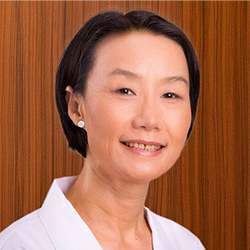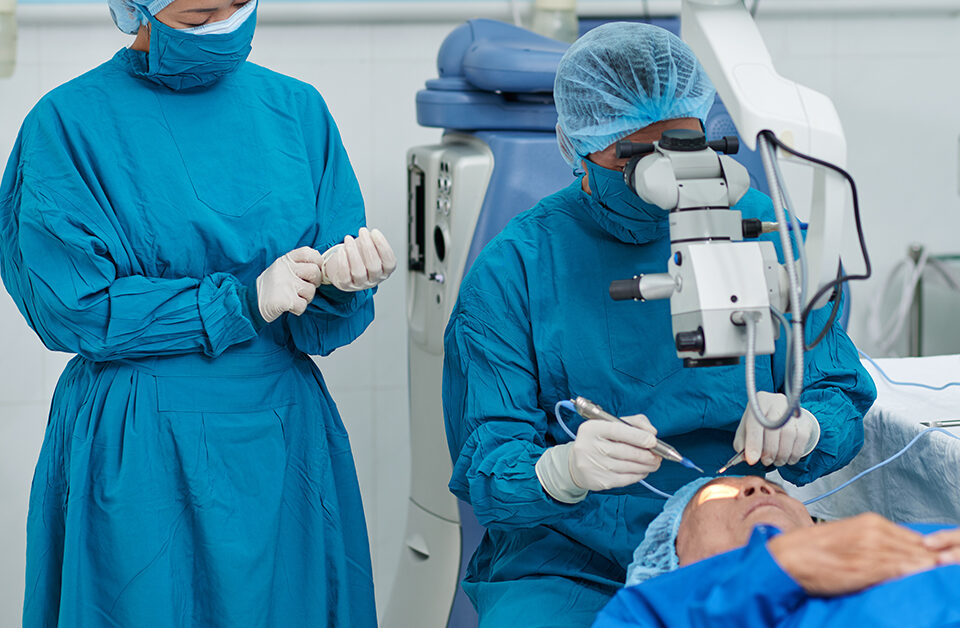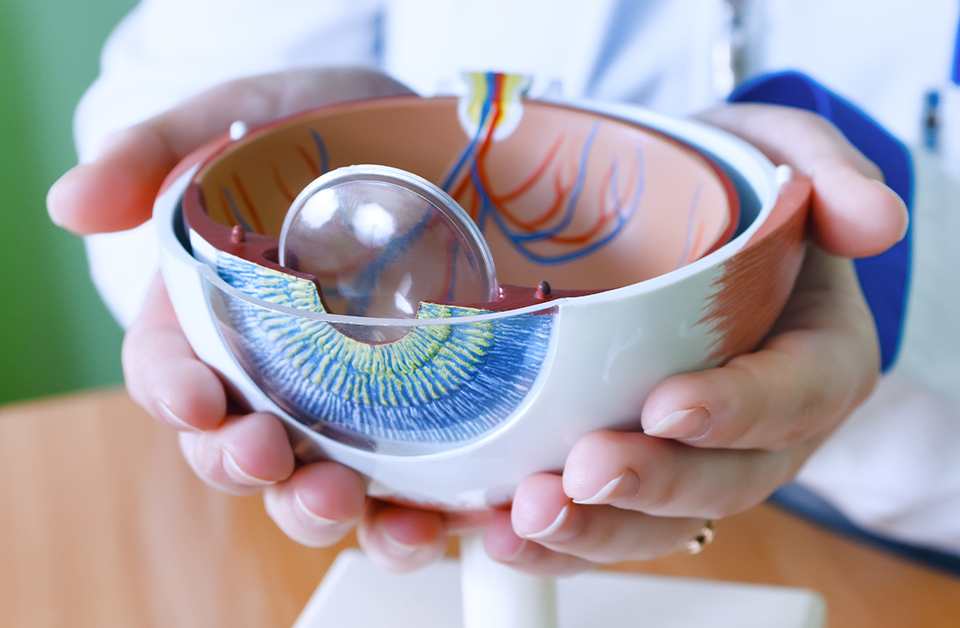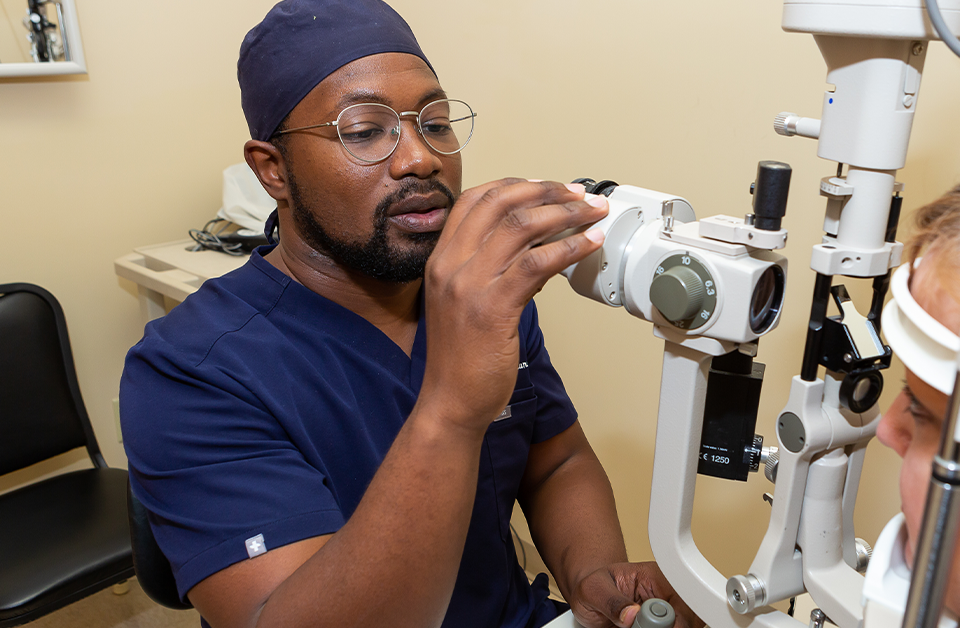

COURTESY PHOTO
“Will worked in engineering, building flight simulators,” Kathryn elaborates. “He was also a software engineer in Orlando. I was a clinical pharmacist at a hospital in Orlando. I worked in that capacity for 42 years.”
Since they retired, Will and Kathryn have been flying their airplane across the country. They’ve been visiting places they didn’t get to see while working.
“Now that we’re retired, we’re in no hurry to do anything,” says Will, a pilot for 22 years. “We’re taking our time and enjoying ourselves. We go on vacation with no rush to schedule. We can stop anyplace and enjoy it any time we want.”
Flying a plane requires excellent vision. In addition to clearly seeing the aircraft’s instrument panel, pilots need to see far into the wild blue yonder. Three years ago, that became a problem for Kathryn, and last year it became a problem for Will.
“I’m very nearsighted,” says Kathryn, 64. “I’ve worn glasses since I was 6 years old. Because my glasses were so thick, I was having problems with my peripheral vision. My eyesight got so bad I almost didn’t pass the medical
test for flying or driving.”
While visiting several eye specialists, Kathryn learned that her vision was deteriorating because of cataracts, a clouding of the natural lens by a clumping of protein deposits. The only treatment for cataracts is a surgical procedure in which the lens is removed and replaced with a synthetic intraocular lens (IOL).
Kathryn also was told she had astigmatism, a condition in which the cornea (the clear front cover of the eye) or lens is egg-shaped rather than spherical. The irregular shape causes blurriness that can often be corrected with prescription eyeglasses. In patients undergoing cataract surgery, however, astigmatism can be corrected by replacing the clouded natural lens with an IOL called a toric lens.
Two-Step Process
“Kathryn came to see me in 2019 after learning from different sources that I can treat astigmatism at the time of cataract surgery,” Dr. Ge recalls. “The first step in that treatment involves taking accurate and thorough measurements of her eye, especially the astigmatism, which was performed in our office using multiple advanced pieces of equipment. The data was then analyzed, and the toric IOL to correct her astigmatism was selected.
“The next step is the precise surgical execution to ensure the lens is implanted exactly according to plan after measurement. As a pilot, Kathryn wanted superior distance vision. We accomplished that for her by implanting Alcon AcrySof® toric lenses bilaterally.”
Similar Situation


WILL WEATHERBEE COURTESY PHOTO
Things are looking up for Will and Kathryn after their cataract surgeries.
Like his wife, Will’s vision issues were caused by cataracts.
“My vision was getting blurry, and at night I started to see halos around some of the traffic lights,” Will recounts. “I was also having problems with the peripheral vision on my right side.”
Those issues progressed until last fall, when Will, who had worn glasses since high school, visited Dr. Ge and expressed his desire to be glasses-free following cataract surgery.
“Will had a similar situation as Kathryn,” Dr. Ge states. “He had high astigmatism and nearsightedness. When his vision started to become blurry, he came to me requesting the same surgery his wife received. He wanted to have both eyes treated to eliminate the astigmatism and allow him to see clearly to fly without glasses.”
Dr. Ge operated on Will’s right eye in October and his left eye in November.
“I used a different lens for Will: the Bausch & Lomb enVista® toric lens,” the doctor says.“There are nuances among the different toric IOLs, and toric lens technology has continued to evolve.”
“Absolutely Fantastic”
“Dr. Ge used a toric lens that was new at the time,” Kathryn reveals. “It corrected my astigmatism and gave me 20/20 vision in my left eye, which was my bad eye, and 20/15 in my right eye, which was my good eye.
“I wear cheaters for very close-up vision, for anything about 12 inches and closer. I wear them when reading a book. But if I need to see at arm’s length, as with driving a car or seeing the plane’s instrument panel, my vision is perfectly fine.”
Will experienced excellent results as well.
“My vision is absolutely fantastic,” he enthuses. “I’ve never seen like this before. The last time I was tested, my vision was 20/10. The first thing I noticed was when I went outside to put the flag out in front of my house. I looked up and could see stars that I never saw before.
“I have no blurry vision at all anymore. And the halos are totally gone. I can drive at night without an issue now. I wear cheaters for close-up vision, but for the most part, I can read regular print.”
Kathryn and Will are grateful to Dr. Ge for her expertise and skill in performing their cataract surgeries. They also appreciate her compassionate manner.
“I love Dr. Ge. She’s so gentle and kind,” Kathryn raves. “She tells you everything she’s doing so you’re not concerned. You know exactly what’s going to happen.
“I absolutely recommend Dr. Ge and Premier Eye Clinic. I’ve been talking about Dr. Ge since I had my surgery. When my husband developed cataracts, he went to Dr. Ge and he’s glad he did.”










